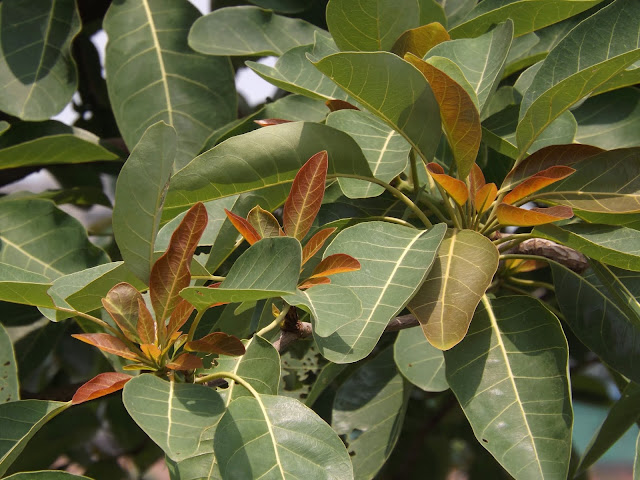Bohera or Belleric myrobalan, Terminalia bellirica
Bohera or Belleric myrobalan (Terminalia bellirica, family: Combretaceae) is a large deciduous tree with numerous spreading branches, attaining a height of 30 to 40 m. Trunk is straght. Bark is thick and deep grey in color. Widely heard ‘Triphala’ is a mixture of Horitki (Terminalia chebula), Amloki (Phyllanthus emblica) and Bohera. According to Ayurvedic method, regular consumption of Triphala-soaked water will reduce excess weight effortlessly. It is found in the Sal forests as well as hilly forests of Bangladesh. It is also found in Southeast Asia and Northern Australia.
Other names: Boyra, Bastard myrobalan (Eng).
Leaves are ovoid or obovoid, 8-20 cm long and 5-10 cm wide with rounded tip, long petioled, alternate, clustered at the end of branchlets. The leaves totally fall off in winter. The sparkle of new leaves in spring is bound to catch everyone's eye.
Inflorescence is axilary, terminal, pendant, spike, up to 8 cm long. Flowers are sweet-scented, sessile, small and greenish in color. Flowers bloom from summer to monsoon.
Fruit a round or ovoid drupe, pendulous, 2.5 cm long, brownish green, velvety, single-seeded. Fruit pulp tastes bitter. Seed pulp is edible. It tastes a lot like Peanuts. Eating too much seed pulp can cause intoxication. Propagation of the plant is caused by seeds.





CCB956D94C
ReplyDeletehacker bul
kiralık hacker
tütün dünyası
-
-